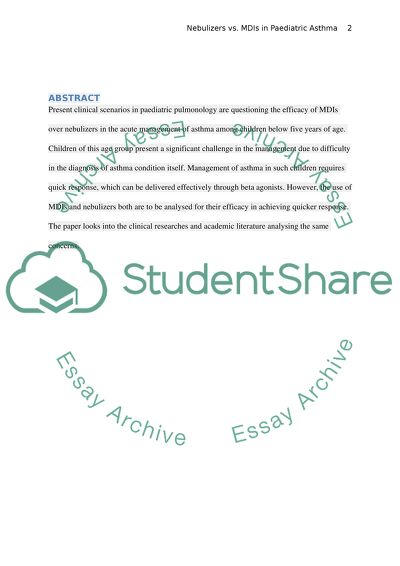Cite this document
(“In Asthmatic Children under the age of 5yrs is spacer inhaler more Essay - 1”, n.d.)
In Asthmatic Children under the age of 5yrs is spacer inhaler more Essay - 1. Retrieved from https://studentshare.org/nursing/1618063-in-asthmatic-children-under-the-age-of-5yrs-is-spacer-inhaler-more-beneficial-than-a-nebulizer
In Asthmatic Children under the age of 5yrs is spacer inhaler more Essay - 1. Retrieved from https://studentshare.org/nursing/1618063-in-asthmatic-children-under-the-age-of-5yrs-is-spacer-inhaler-more-beneficial-than-a-nebulizer
(In Asthmatic Children under the Age of 5yrs Is Spacer Inhaler More Essay - 1)
In Asthmatic Children under the Age of 5yrs Is Spacer Inhaler More Essay - 1. https://studentshare.org/nursing/1618063-in-asthmatic-children-under-the-age-of-5yrs-is-spacer-inhaler-more-beneficial-than-a-nebulizer.
In Asthmatic Children under the Age of 5yrs Is Spacer Inhaler More Essay - 1. https://studentshare.org/nursing/1618063-in-asthmatic-children-under-the-age-of-5yrs-is-spacer-inhaler-more-beneficial-than-a-nebulizer.
“In Asthmatic Children under the Age of 5yrs Is Spacer Inhaler More Essay - 1”, n.d. https://studentshare.org/nursing/1618063-in-asthmatic-children-under-the-age-of-5yrs-is-spacer-inhaler-more-beneficial-than-a-nebulizer.


